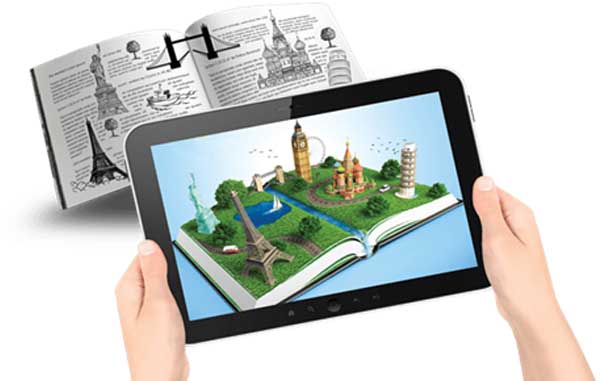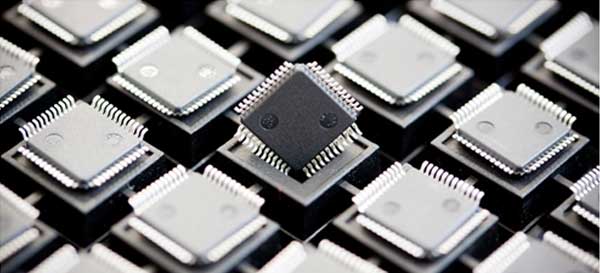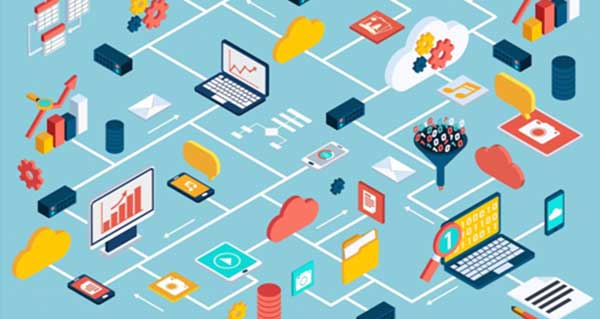
In order to understand how impactful this advancement is going to be, we have listed down 10 technology trends that will change the world in the next few years.
1. Internet of Things

Click to read: 10 Real Life Instances of IOT in Use
IoT is currently at boom and has become a hot topic of discussion everywhere. It can simply connect any device to the internet and then the data is analysed and transferred in a way that the machine learns about the needs of the user on its own. Nest thermostat and Philips hue bulbs are some notable examples of IoT which are gradually becoming an essential part of our lives.
In the future, it is estimated that more and more devices will be connected to the internet on a very large scale. Possibly someday, the alarm clock would convey the brewing machine to make a cup of coffee or the refrigerator would order food items when the stock runs out. However, this will need some time to get implemented.
According to Mr. Cees Links, the founder of Green Peak technologies, we need to understand the rules and legislations associated with IoT before it becomes a common practice; just like it happened with Wi-Fi.
2. Augmented Reality

In this trend, the real world environment is supplemented through computer-generated sensory inputs in the form of video, audio, graphics and GPS. It works in a way that enhances the users’ view by combining the digital world with the real world. Even though it is perceived as a big part of the gaming industry, the fact is that it has already been applied to military and medical applications from the very beginning. It can be availed in the form of devices like eyeglasses, hand-held devices, a head-mounted display, etc.
Today, it is being developed to be utilised in almost all the fields like tourism, art & architecture, education, and what not. Soon it will become common for people to use this technology to see how a couch would look in their living room or how a house would look on a certain piece of land.
3. 3D Printing

3D printing is the process whereby a 3-dimensional object is printed from a digital file, layer by layer. Currently, it is being used in various fields like the fashion industry, healthcare, and automotive. It began with printing plastic material which then progressed to metals and now it can even print human cells.
Day by day the 3D printing industry is growing at a fast pace with experiments being done on food supplies, body parts and internal organs, automobiles and even houses. It is believed that the manufacturing and design sector would be largely affected by this trend in the coming future. If everyone would be able to print everything then no one would be actually buying anything and that’s apparently not a positive thing to happen.
4. Artificial Intelligence

You may also like: Top 10 Industrial Applications of AI
Artificial Intelligence is actually the ability of machines to think and act like humans. Today the stage has come when machines can adapt to the environment and perform various tasks without being told what to do. Robots are being developed to understand human emotions and to work like humans in factories. Moreover, they are available as chat bots to assist online customers, offer suggestions for medical diagnosis, and act as virtual assistants on smartphones.
Reportedly, it’s growing at such a fast pace that it may even replace humans in the coming future which can lead to unemployment of the masses. Undoubtedly, this trend will ease decision making and save a lot of time as well as cost but most of the tech pundits believe that it’s going to be a huge setback for human beings if the correct limit is not decided.
5. Micro-Electromechanical Systems

This technology is used to build very small devices or integrated devices by combining mechanical and electrical components. The size of these devices may range from 1 micron to a few millimeters. It can be commonly seen in the form of accelerometers with objects like airbags equipped in modern cars, Nintendo game controllers or smartphones and laptops.
The expansion of IoT market, increasing production of wearable gadgets and growing need for integrated devices is going to drive the volume of MEMs in the coming years. At some point, this technology could be utilised in the form of tiny micro rockets being equipped in space shuttles.
6. Quantum Teleportation

It’s a process in which quantum information i.e. the exact state of an atom or photon can be teleported from one location to another through the quantum entanglement between the two locations. However, unlike Star Treks’ Transporter series, it’s not possible to transfer matter (say human) through this technique.
Apparently, there have been numerous experiments on quantum teleportation since the 90’s and it has been quite challenging. Even though it can’t be applied to humans, a recent experiment brought the trend closer to real life applications. It basically presented a way to send encrypted messages over the web and now the challenge is to make it available to the masses on a large scale.
7. Nanotechnology

Suggested Reading: Nanotechnology and its Role in Agriculture
It’s the branch of technology that enables us to study and understand the matter at the nanoscale. It allows us to observe the atoms and molecules which are otherwise not visible. Today, it can be found in cosmetics (anti-aging and sunscreen lotions) and clothing in order to make the surfaces self-cleaning for a long time.
In the next 20 years, this concept is going to affect the life of each one of us. It will be possible to make nanobots that will autonomously enter the patients’ bloodstream and repair all the damage. However, much like any other trend, this could be harmful to the health as well as for the economy in future.
8. Blockchain Technology

Blockchain is an innovation that stands as a proof for all the transactions taking place over the internet. The blockchain contains numerous blocks interlinked with one another whereby each block carries batches of valid transactions. It is an electronic ledger system that can reduce cyber crimes to a considerable extent.
In future, this trend will be popular among banks in settling fixed income trades and equity management. Moreover, it can also be used by small business houses for creating trustworthy trading platforms. Although this would mean a lot of time saving and efficiency, it could eliminate the need for various banking applications that would affect the jobs of bank employees.
9. Big Data

Conventionally Big Data is defined by the datasets with a size which is beyond management by traditional databases. However, in the last few years, the meaning has changed to the tools that have the ability to manage huge amounts of data. Due to the rising popularity of IoT and wearable gadgets, this amount is going to multiply even more in the next few years.
Owing to the increased use of the web, the database created on a daily basis amounts to 2.5 quintillion bytes. Thus Big Data is really important so as to make the best use of this data and manage it properly. Cisco believes that Big Data industry will reach 450 Billion by next year and up to $85 Billion by the year 2020.
10. Cloud Computing

Cloud computing us defined by the practice of storing data and programs on the internet rather than on the hard drive of a personal computer. Sharing data over a cloud means that it can be easily accessed with other (authorized) users anytime and anywhere. The most common example of a cloud service is Google Drive.
It has a lot of advantages like reduced operating cost, high security, and unmatched flexibility along with the instant system updates. The cloud computing service is going to benefit all the industries in numerous ways. It will help the people to stay fit, help businesses to go global, assist online buyers in shopping and fade away language barriers.
Conclusion
After looking at the emerging technology trends that are set to transform the future, it can be concluded that the future surely holds a lot of changes. However, changes can be both positive and negative and as far as technology is concerned, the implications will evidently be quite serious. From Artificial Intelligence to Nanotechnology, an over-dependence can be very disruptive as discussed above.
As per Mr. Steve Case, an American Entrepreneur, “For better or worse, that is true with any new innovation, certainly any new technological innovation. There’s many good things that come out of it, but also some bad things. All you can do is try to maximize the good stuff and minimize the bad stuff.”
You may read our Blog and Article section for more topics on electronics engineering, industry, and technology.
Filed Under: Tech Articles


Questions related to this article?
👉Ask and discuss on Electro-Tech-Online.com and EDAboard.com forums.
Tell Us What You Think!!
You must be logged in to post a comment.